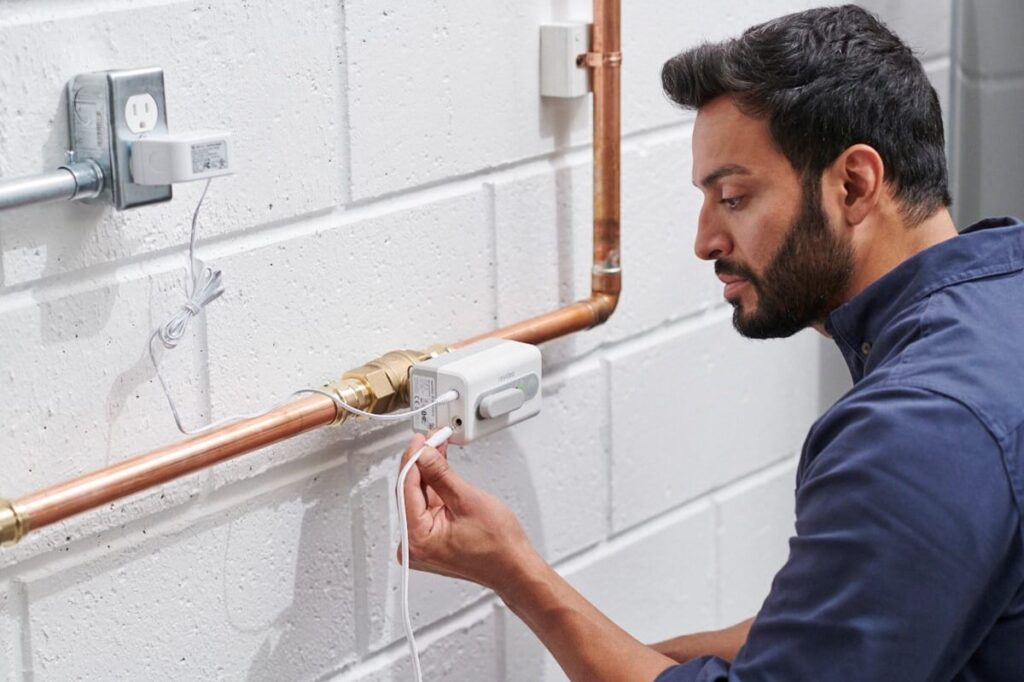Did you know that your home has a pulse? Electricity and electric circuits power it, air flows through filters and duct work to keep it comfortable and water surges to various ends of the home through pipes. Each one of these critical systems reflects your home’s pulse as it consumes and conserves resources.
The latter example, water, offers one of the more interesting areas of insight. It may have the power to carve out the Grand Canyon, but when harnessed correctly, it gracefully flows through our homes providing all the conveniences modern plumbing provides. The question for those of us in the connected home or insurance space being asked is how can we best continue to channel this great force of nature and better protect our homes in the process? Knowledge and preparation are critical.
Water damage, including damage from freezing pipes, is one of the most common and most costly types of homeowner insurance claims.
A study from 2016 to 2020 reveals that about one in 60 homeowners files an insurance claim annually for water damage or freezing pipes at an average of $11,650 per claim. Additionally, homeowners are more likely to file a water-damage claim (27%) than one for a fire or lightning (5%). For property insurers in the U.S. alone it’s more than a $24 billion problem.
The good news is that a multi-year study shows 93% of water leaks can be prevented or minimized if an automatic water leak detection and shut-off system had been present in the home. Utilizing well-placed water leak detectors that are preferably connected to a water shutoff valve can help prevent catastrophic water damage. By our estimates in just 2022, Resideo Water Leak and Freeze detectors helped save 2.4 million gallons of water and helped prevent an estimated $2.5 million in insurance claims.
Stop Water at the Source with a Strategy that can Scale
We’re all sensitive to the essential role water plays in the home – from personal consumption and hygiene to watering the plants inside and outside our homes. The cost of water is rising like other utilities and so are monthly insurance premiums — everyone involved is sensitive to the expense to access and control it.
From an insurer’s lens, mitigating the pain and expenditures from unwanted surprises is vital. This problem also represents a unique opportunity to guide property insurance customers to: 1.) proactively make the right investments to better protect their homes; and, 2.) initiate a key starting point to building out a broader platform of connected home customer engagement.
The best place to start is to offer policy holders guidance or even purchase access through an insurance-company branded website. Their ideal journey can start with entry-level leak detection devices, and then expand to a whole-house shut-off solution with professional installation choices for policy holders that have either a ‘Do It Yourself’ (DIY) or ‘Do It For Me’ (DIFM) mindset.
This strategy can better enable insurers to drive scale through adoption and better meet the budget requirements of its policy holders. A professionally installed water management system that can shut a home’s water supply off to avoid water damage creates a higher level of peace of mind, but can easily cost more than $2,000 to install. For basic protection, a water-leak detection device like Resideo’s Water Leak Detector retails for $64.99 and may provide an easier access point to start.
When it comes to building a strategy to better protect homes from water damage, both ends of the spectrum should be considered — both DIY and DIFM. And even more ideal, insurers should work with the segment of their policy holders that have elected to better protect their homes. For example, the policy holder can opt-in and share the data from their water leak detection device through a device enrollment API (Application Program Interface), and the insurer can verify the device is working and being used. It’s an added safety net that could potentially reduce their cost of coverage, reduce potential friction during a claims process and help those i clients better protect what matters most while providing potentially useful data insights to the insurer.

Areas to Use Water Leak Detectors
Utilising point-of-contact leak detection devices with a water management system has the added benefit of alerting policy holders to potential leak points not traditionally associated with a home’s plumbing system. Areas include:
1. Air Handler or Furnace. Using water leak detection devices in or around a condensation pan would be a good idea to identify any water damage threat in an unconditioned space like an attic.
2. Dehumidifier in a Crawl Space. The average dehumidifier captures 30-70 pints of water per day and this moisture needs to go somewhere. A water leak detector delivers peace of mind when the unit is out of sight.
3. Sump Pump Pit. These devices are critical for providing protection to one’s home from ground water. Knowing there is a problem allows you to act before three inches of water fills the entire basement.
4. Locations Prone to Weather Related Egress. Alerting policy holders to a flood that may be coming from an external source better enables them to stop or mitigate potential damages.
At Resideo, we know these things can be easier written than done but we welcome the opportunity to utilise our legacy of industry knowledge and robust network of industry partners — from top tier manufacturers, builders, utilities to professional service providers — to help your business deliver on reducing claims, increasing satisfied customer engagement and differentiating yourself in the market.
About the author: Matt Adcock Resideo is Director of Business Dev, Insurance Channels at Resideo. Resideo is a leading home controls specialist with a more than 150-year heritage in safety, security and comfort. The company spun off from Honeywell International in 2018 and is most widely known by its two main home brands — Honeywell Home and First Alert. Matt has spent twenty years in the professional home services industry, 15 of them with Resideo and previously Honeywell International. With a baseline of more than 150 million homes globally, a broad array of distribution, and a continuing drive to embed data sensors in our solutions, Matt and his team are building a unique level of consumer interaction and insight from consumers that opt to share their data with us — at 11.3 million customers and counting.
Source: Resideo – sponsored content








